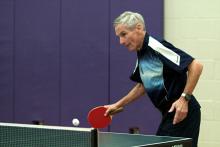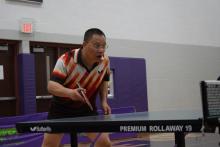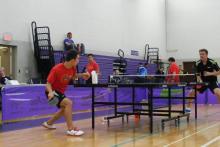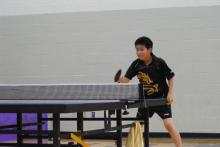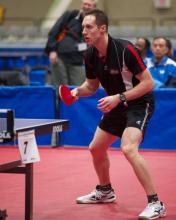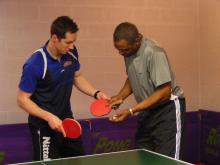An article related to improving players table tennis skills.
by Samson Dubina on Mon, 2013-11-25 21:38
Failure vs. Success For the Offensive Player
You have practiced your attack for months…
Hired a physical trainer…
Perfected your favorite table tennis robot drills…
Purchased the newest equipment…
Watched every table tennis video on the market…
Held tight to your diet…
Prepared mentally for your first tournament…
BUT failed to win a single match! What went wrong? As an offensive player, your experienced opponents were probably able to attack first.
by Samson Dubina on Fri, 2013-11-22 20:59
by Samson Dubina on Sun, 2013-11-17 15:22
12 Tips About Coaching Table Tennis!
Since the beginning of 2008, I have been coaching table tennis for a living. Right now, I have eighteen students ranging from 600 level to 2200 level. In this article, I’m going to give twelve practical ways that I use to maximize my students’ potential.
Tip #1 - Goals
by Samson Dubina on Fri, 2013-11-08 23:27
Test your knowledge about current table tennis facts!
Table Tennis Quiz
1. When did table tennis become an Olympic Sport?________
a. 1988 b. 1996 c. 2012
2. According to the International Olympic Committee, table tennis is now the _______ sport in the world, based on total tournament players.
a. #1 b. #2 c.#3
3. Spin is the main factor that distinguishes recreational ping pong from professional table tennis. The ball can spin up to__________ rotations per minute.
a. 78 b. 780 c. 7800
by Samson Dubina on Wed, 2013-09-18 16:36
Footwork Mechanics, Anticipation, Visualization, and Fitness
Four Elements of Footwork
“If I can lose 10 pounds, my footwork will really improve!”
This is a common statement made by hundreds of club players nationwide. Yes, their footwork probably will improve, but losing 10 pounds is only 1 of the 4 elements to having excellent footwork. I have seen some great athletes (in other sports) who had very poor footwork in table tennis. I have also seen some 300 pound table tennis players who had decent footwork.
Element #1 Mechanics
by Samson Dubina on Sun, 2013-08-04 02:59
Learn How to Boost Your Level Faster!
Playing Better vs. Improving
Last week, coach Massimo Costantini was discussing with me the difference between playing better and improving.
I can play better if I continue to practice hard. My strokes become more solid and possibly my mind will become sharper from getting more experience. However, my progress curve will be fairly slow.
by Samson Dubina on Wed, 2013-02-27 01:53
Learn the Details on How to Control the Game!
Perfecting the Short Game
Mastering the strong short game is crucial at the intermediate to advanced level because it allows you to attack first, which gives a huge advantage during the point. There are three primary ways to receive a short serve – short push, long push, and flip. Each player has a preference with which they use more often, but it is vitally important to perfect all three so that you have more options.
by Samson Dubina on Thu, 2012-04-05 16:30
Coach Carl Hardin is both a table tennis coach and a top-level bowling coach. This week, we had a brief conversation on the phone. At the end of the talk, I asked him to summarize what he was explaining in article form so that you could see the difference. If you have ever come to one of my classes, you will understand that Coach Carl Hardin's approach has had a huge impact on my coaching.
Understanding Your Mistakes
By Coach Carl Hardin
Pages




